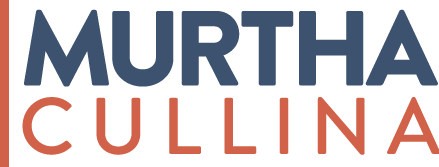June 6, 2019
The Qualified Opportunity Zone (“QOZ”) regime introduced as part of the 2017 Tax Cuts and Jobs Act provides three significant and distinct federal income tax benefits to encourage QOZ private investment:
- A taxpayer may defer recognition of eligible capital gain rolled over into a qualified opportunity fund (“QO-Fund”) investment until the earlier of the disposition of the investment or Dec. 31, 2026;
- The permanent exclusion of up to 15% of the deferred capital gain if the QO-Fund investment is held for at least seven years prior to Dec. 31, 2026; and
- The permanent exclusion of 100% of the appreciation in value attributable to the QO-Fund investment if the investment is held for at least 10 years and is disposed of no later than December 31, 2047.
On April 17, 2019, the IRS issued a second set of proposed regulations (the “Second Regulations”) regarding the QOZ regime. These Second Regulations provide additional guidance and address many of the questions left unanswered by the first set of IRS proposed regulations issued on October 29, 2018 (See, IRS Issues Eagerly Awaited Guidance on Qualified Opportunity Zones While States Decide Whether to Conform).
The following are some of the highlights of the Second Regulations:
- Original Use: The original use of QOZ business property (“QOZBP”) occurs when the property is first placed into service inside the QOZ for purposes of depreciation or amortization. This means that used tangible property will also meet the “original use” requirement with respect to a QOZ if the property has not been previously used in the QOZ by any person.
-
Substantial Use Determined on Asset-By-Asset Basis: The determination of whether the “substantial improvement” requirement is met for purchased tangible property is made on an asset-by-asset basis.
-
Vacant Property: Buildings or other structures that have been unused or vacant for an uninterrupted period of least five years prior to purchase by a QO-Fund or the business conducted in the QOZ (“QOZ Business”) satisfy the “original use” requirement.
-
Unimproved Land-Substantial Improvement: Unimproved land is not required to be substantially improved to be treated as QOZBP provided the land is used in the active trade or business of the QO-fund or QOZ Business. However, the Second Regulations include an anti-abuse rule that prevents a QO-Fund or QOZ Business from relying on this exception if the land was purchased with the expectation, intention orview not to improve the land more than an insubstantial amount during the thirty months following the date of purchase.
-
Straddle Rule: Contiguous property straddling a QOZ and non-QOZ is treated as QOZ property in its entirety if the portion of the parcel located in the QOZ is substantial in comparison to the portion located in the non-OZ. This determination may be based on the relative unadjusted cost bases or square footage of the QOZ/non-QOZ property.
-
Leased Property: A QO-Fund or QOZ Business may conduct its business as a lessee provided: (1) thelease is entered into after December 31, 2017; (2) the lease terms are arm’s length, market rate in the locale that includes the QOZ; and (3) at least 70% of the leased property is used within a QOZ during at least 90% of the period for which the QO-Fund or QOZ Business leases the property.
A QO-Fund or QOZ Business may lease property from a related party (20% common ownership) provided: (1) the lessee cannot make prepayments of rent for a period exceeding 12 months; and (2) if the leased property is tangible personal property and the original use of the property does not commence with the lessee, the lessee must, within 30 months of receiving possession of the property subject to the lease (or the period ending on the last dayof the lease, if shorter), become the owner of tangible property that is QOZBP having a value not less than the value of the leased tangible personal property.
- 50% Gross Income Test Safe Harbor: A business cannot qualify as a QOZ Business unless at least 50% of its gross income is derived from the active conduct of a trade or business. The Second Regulations provide three safe harbors that will permit a business seeking to qualify as a QOZ Business to satisfy the 50% gross income test even if significant business activity occurs outside of the QOZ:
-
At least 50% of the total number of hours spent by the business’s employees and independent contractors in performing services for the business during the taxable year are performed within a QOZ;
-
At least 50% of the total amount paid by the business for employee and independent contractor services performed for the business during the taxable year are performed within a QOZ; or
-
Both (i) the tangible property of the business that is in a QOZ, and (ii) the management or operational functions performed for the business in a QOZ are necessary for the generation of 50% of the gross income of the business.
-
- Intangible Property Test: A business cannot qualify as a QOZ Business unless a substantial portion of the intangible property of the business is derived from the active conduct of a trade or business in the QOZ. The Second Regulations define “substantial portion” to mean that at least 40% of the business’s intangible property must be used in this manner.
-
Real Property as a Trade or Business: The ownership and operation of real property (including leasing) is considered the active conduct of a trade or business. However, a triple-net-lease arrangement is not an active trade or business.
-
Working capital safe harbor – The 31-month working capital reserve safe harbor applicable to QOZ Businesses will not be violated if a delay beyond 31 months is caused by a delay in government action. Also, a QOZ Business may utilize the working capital safe harbor to develop a trade or business in a QOZ (in addition to the acquisition, construction and/or improvement of tangible property in a QOZ).
-
90% Asset Test: Cash, cash equivalents and debt instruments received during any 6-month testing period are ignored in applying the 90% asset test for that period.
-
Reinvestment Rule: Proceeds from the sale or disposition of QOZBP will be treated as QOZBP if the proceeds are reinvested within 12 months of the sale or disposition (but proceeds must be held in cash, cash equivalents and/or debt instruments with a term of 18 months or less).
-
Election for Qualifying Investment Held for 10 Years: If a taxpayer has held an investment in a QO-Fund partnership or S-corporation for at least 10 years and the QO-Fund disposes of QOZBP after such 10-year holding period, the taxpayer may elect to exclude from gross income a portion or its entire allocable share of capital gain.
-
Deferred Gain Inclusion Events Prior to December 31, 2026
Generally any transaction that reduces a QO-Fund investor’s interest in the QO-Fund will be treated as a gain inclusion event. Examples of inclusion events include:
-
Transfer that reduces the investor’s equity investment in the QO-Fund;
-
Claiming a loss or deduction for worthless QO-Fund stock;
-
Termination or liquidation of the QO-Fund or taxable liquidation of the owner of the QO-Fund;
-
Gifting of a QOZ investment;
-
Non-dividend distribution by a QOF corporation in excess of the investor’s tax basis in its QOF stock;
-
Actual or deemed distributions of property or cash by a QO-Fund partnership to a partner to the extent the fair market value of the distribution exceeds the partner’s basis in the QO-Fund interest;
-
Actual or deemed distributions of property by a QO-Fund S corporation to a shareholder to the extent the fair market value of the distributed property exceeds the shareholder’s basis in the QO-Fund interest;
-
Greater than 25% ownership change of an S corporation that owns a qualifying investment in a QO-Fund;
-
Certain nonrecognition transfers; and
-
Debt-financed distributions by a partnership to a partner to the extent the distribution exceeds the partner’s basis.
-
- Events That Will Not Trigger Inclusion of Deferred Gain Prior to December 31, 2026:
- A contribution of a QO-Fund investment to a disregarded entity, including a grantor trust;
-
A distribution by a QO-Fund partnership to a partner but only to the extent the FMV of the distribution does not exceed the partner’s basis in the QO-Fund investment;
-
A distribution by a QO-Fund S corporation to a shareholder but only to the extent the amount distributed is not treated as gain from the sale or exchange of property for federal income tax purposes;
-
Transfers at death;
-
For S corporations, (1) election, revocation or termination of S corporation status; and (2) conversion to a C corporation or conversion from a C corporation to an S corporation that holds a QO-Fund investment; and
-
A tax-free contribution of a QO-Fund interest to a partnership.
- Miscellaneous Provisions
- The 180-day period to invest IRC Section 1231 capital gain in a QO-Fund begins on the last day of the taxpayer’s taxable year;
-
A taxpayer with eligible capital gain can contribute property (rather than cash) to a QO-Fund in exchange for a QO-Fund interest regardless of whether the taxpayer recognizes gain or loss on the property transferred;
-
A QO-Fund interest received in exchange for services (e.g., carried interest) is not an eligible interest;
-
A taxpayer may make a qualifying investment in a QO-Fund by acquiring equity in the QO-Fund from another person other than the QO-Fund in exchange for cash or property, and
-
When property is contributed to a QO-Fund in exchange for a QO-Fund interest, the holding period of the QO-Fund interest begins on the date of the property contribution (no tacking)
- General Anti-Abuse Rule: IRS can recast any transaction for tax purposes if it believes the transaction is inconsistent with the QOZ rules.
The Second Regulations provide favorable guidance, helpful rules and flexibility in many respects that should encourage investment in QOZs. The above highlights some of the main features of the Second Regulations that we believe may be of particular significance to taxpayers. Like the first set of proposed regulations, the Second Regulations generally may be relied upon by taxpayers immediately. However, the technical requirements that must be satisfied to achieve the significant tax benefits associated with a QO-Fund investment, as well as decisions regarding the manner in which a QO-Fund investment should be made, are extremely complex. For these reasons, taxpayers considering a QO-Fund investment should do so only with the assistance of competent legal and tax advisors.
This Client Alert is intended to provide general information about the Second Regulations under the QOZ regime and is not intended to be a comprehensive summary of the federal tax rules applicable to the QOZ regime. If you have any questions regarding the QOZ regime, how the related IRS regulations might impact your consideration of a QO-Fund investment, and/or any potential tax planning opportunities that are available under the QOZ regime, please contact Marc T. Finer, Tax Partner, at 860-240-6096 or mfiner@murthalaw.com.
![]() tax__round_two__irs_issues_additional_qualified_opportunity_zone_regulations_v5.pdf
tax__round_two__irs_issues_additional_qualified_opportunity_zone_regulations_v5.pdf

